Women from a plethora of backgrounds and generations feature in the photographic work of Hannah Starkey. What unites them? A considered, unfaltering look at the nature of female life and the woman as a lone subject. This week, Starkey returned to Maureen Paley, for her seventh solo exhibition at the East London gallery.
Can you tell us a little about the body of work that will be shown at Maureen Paley?
Each exhibition that I develop is a continuum from the work I started as a student at the RCA in 1997. The images I have made over the years track my observations of the world and focus specifically on a female perspective. I take women as my subject and around this are my investigations into photography, its influences and how it has shaped our ideas on what it means to be female.
In my most recent show at Maureen Paley I have taken the genre of street photography as a vehicle to articulate my own experiences and observations of women and city life. I have always been interested in the idea of the flâneur, as it describes what I do exactly. However I could never identify with it fully as the idea seemed pitched to be exclusively male. I love being a female photographer, it has given me great access and insight and I would like to take ownership of this pursuit from a particularly female perspective – the flâneuse.
There are five photographs in the show, each relating to specific areas that I am interested in exploring. They externalise my feeling towards ideas of beauty and challenge the very narrow definition of this that women are sold through advertising and popular visual culture – a singular ideal of western beauty. These ideals are damaging for younger generations of women all over the world who are presented with specific products and procedures through advertising aimed at re-shaping and re-colouring their natural features. The photograph in the show that speaks about this issue most directly, is Untitled, November 2015.
I am very aware of the power that our beauty and fashion industry has in shaping these western ideals, and the power that the image has to brainwash us into following these trends. My intention is to create a space that challenges the preconceived ideas of how a woman should look in a photograph – allowing for a different take on female beauty that is informed by a more cerebral idea of beauty that might resonate without dictating. One of the more challenging and visually arresting ways of doing this is by weaving into the pictures subtle and intricate patterns that seduce the eye and the brain to look closer and to think harder about what is being presented.
Mirror – Untitled, September 2015, is very much about visual pleasure and the act of looking and this photograph presented me with a lot of challenges when it came to making aesthetic decisions. My instinct for a good picture is very strong and I had to override decisions I would normally make as it is a combination of so many elements that need to work together to make a whole photograph. I’ve always been fascinated by mirrors and how they translate into a two dimensional photographic representation of reality. They create depth for the eye to travel through when looking at a photograph, and they are also the only way we see ourselves in the world outside lens based media.
In this photograph the mirrors reflect a type of narcissism and introspection that we are now prone to. The advent of the smart phone with its camera apps and the ability to compose a self portrait has had a massive impact on photography. We are all photographers now and we are all visually literate which is very exciting. I think of this picture as relating to the Instagram revolution.
The individual within the city plays a key role for your work, do you feel the influence of particular cities in your thinking?
I work mostly in London and have a route that I find myself on again and again. I live in East London, which is a melting pot for all different sorts of people crammed into the same area. What is interesting for me and in particular to this part of London, is how the demographics and cityscape change within a few streets. My favorite route is from my home in Hackney to the financial district, in the city. When working on a show, my visual senses are heightened to such an extent I have to remind myself to pay attention when crossing the road. It’s wonderful and sometimes overwhelming as a street photographer to be confronted by the street, I think of it as my palette and I have a great and exciting range of subjects to choose from.
How do you find the women you use in your photographs?
Various ways. There is not one main formula in my work, it is influenced by what the picture needs at that time. So, I can use friends, cast actors or models or ask people on the street. On-the-street casting is very much about catching a glimpse of someone and just having a sense that there is a quality in them that would convey the message in the photograph very well. That’s the easy part, the tricky part is that I’m quite shy and find it hard to go up to complete strangers and ask them to be part of my idea. I know what I’m asking is potentially exposing, so I have to be absolutely honest and sincere with them to gain their trust. I always think of my photographs as collaborations between the woman/women and myself. It’s a big responsibility to take someone else’s likeness and use it and I’m always amazed how generous people are – it’s very important to me to represent them fairly. Digital screens have also been a great help in the collaboration process because as I shoot, I can show my subject what the picture looks like and if they are happy with it. Photography is potentially an exploitive and hierarchical set up – the subject at the mercy of the photographer, so by working collaboratively with my subject I take this inequality out of the equation.
Getting a stranger to stop on the street to be photographed is a big ask, and requires me to be completely sincere and very open. I think it’s this rawness that gets into the pictures, the intensity of making the picture. It’s a spiritually uplifting experience to communicate with a total stranger, to exchange life stories – I’ve learnt a great deal about women’s lives through the act of photographing them and feel great empathy and respect for them. I find it very difficult to photograph someone without their permission, it’s the least I can do if I’m using their image and I don’t want to be sneaky about this, besides, every time I have an encounter with a stranger (and for me a stranger is always female), its an enriching experience and I’ve also got a picture out of it.
For me photography is about serendipity and I am a junkie for the heightened state of creating, when all the factors that make up a picture come together in the most magical way with its own type of energy. And that’s an energy I get from the street and have transferred into my pictures for this show.
The staged photographic image and the ‘cinematic’ are both central to your practice. How have you experienced the nature of these two change over the course of your career?
Well, I’ve never thought of myself as a staged photographer. I see what I do as particular to my eye, it’s how I see the world in its 2D representation. My composition is instinctual, I’m composing pictures even when I don’t have a camera and I don’t carry a camera around with me. Over time I store up my observations and visual influences until I’m ready, which is about every two years and I shoot it in about two months. It’s like a big burst of energy in the third trimester. I also think of my language as photography, its how I communicate best, so making new work and sending it out there is an extension of that.
Whether it’s for a commercial or fine art context I apply the same visual language. I’ve developed this language through studying various types of photography and its applications, like fashion, advertising, editorial, still life and portraiture. When I was at college the categories were so segregated i.e. you can either be a fashion photographer, an advertising photographer, photojournalist or fine art photographer. I couldn’t ever understand why they all had to be separate because they were all part of our visual culture and why can’t the good bits from each, influence one photograph. So, I work with the language of fashion photography, advertising, documentary etc. and my photography is an experiment into the crossing and combining of these influences, and not staged photography for the sake of staging. Many great photographs are staged anyway and I always think of ‘staged photography’ as term dreamt up by the art world. I prefer the term ‘constructed photograph’ because it describes the reconstruction of the real as an act of redefining the real to reveal a psychological truth. Constructing the elements of the narrative into the frame of a photograph is second nature within photography.
All five of the photographs in the new show have come into existence in different ways – either as straight documents or as composite images and yet they are fluid with each other because they speak of the same idea.
There are many ‘obstructions’ in your work—windows, lights, reflective surfaces—is it fair to say that these are intended to reveal the construct, of the photographic image?
Yes, I love layering. I think it makes the eye work harder because the obstructions block the consuming gaze and slow down the deciphering of the picture. Because a photograph is still, when displayed large and on a gallery wall, it allows the viewer to stop, look and mediate on its meaning and what it might mean to them. It’s a conversation between the subject, the viewer and myself. My pictures always allude to a narrative, I think of myself as a storyteller and good stories have multiple layers of meaning. By incorporating windows, mirrors and reflective surfaces into my work I can take the eye on a visual journey to the heart of the narrative in the photograph and then back out.
Hannah Starkey is showing at Maureen Paley until 24 January 2016. All images: © Hannah Starkey, Courtesy Maureen Paley, London
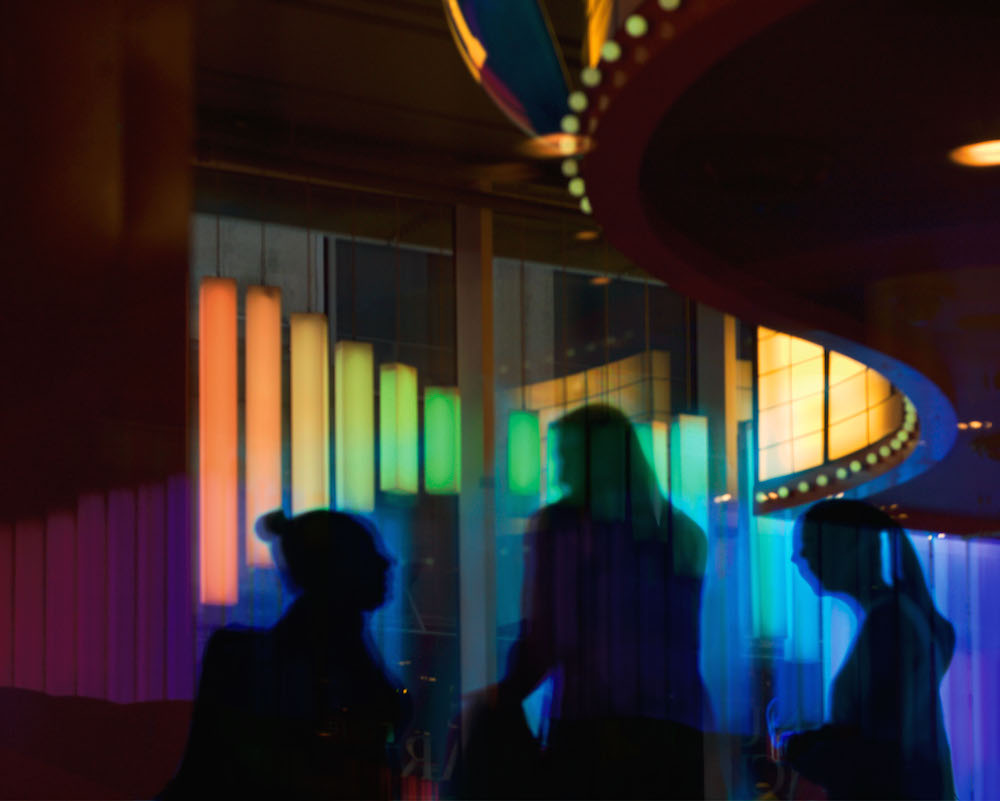
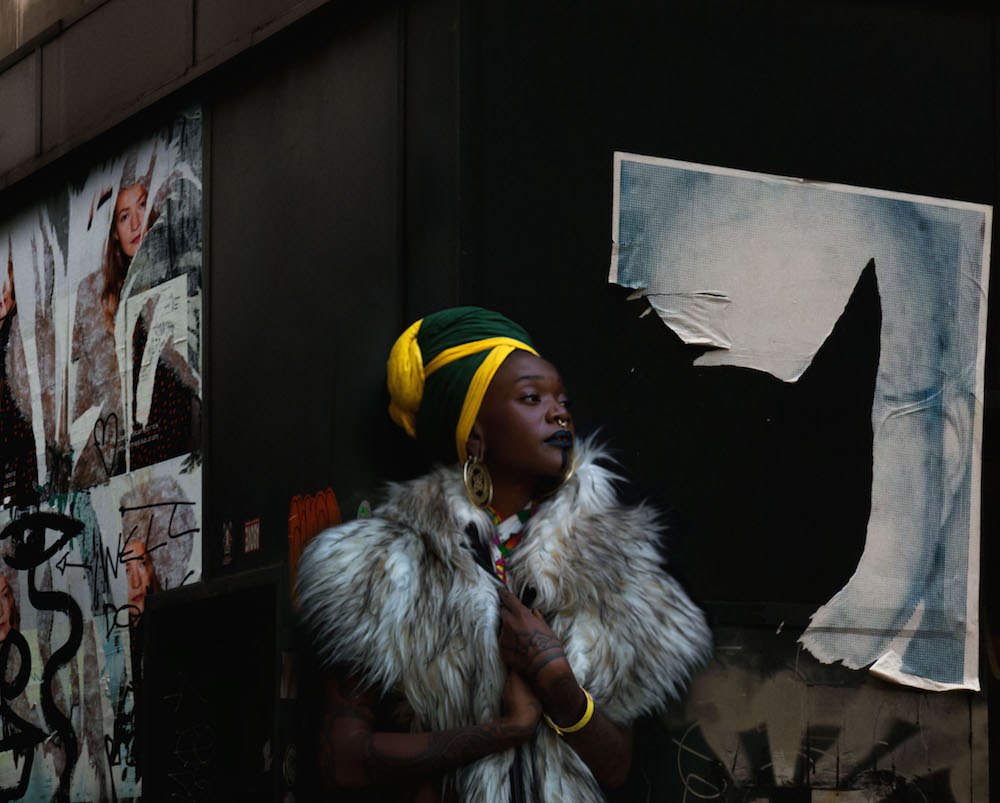
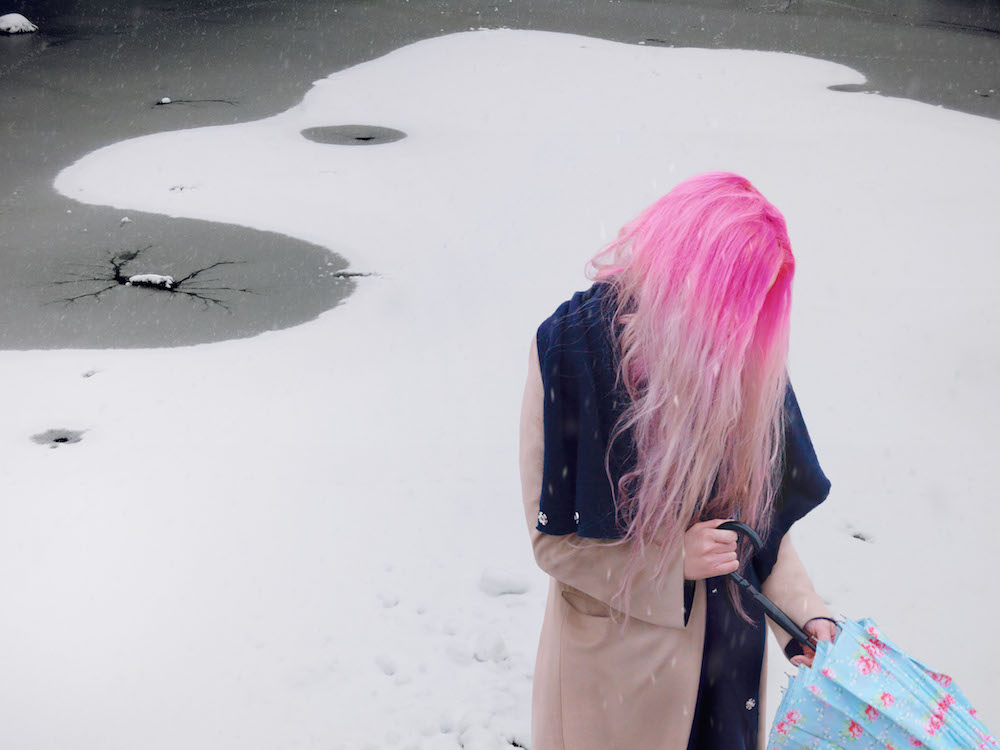
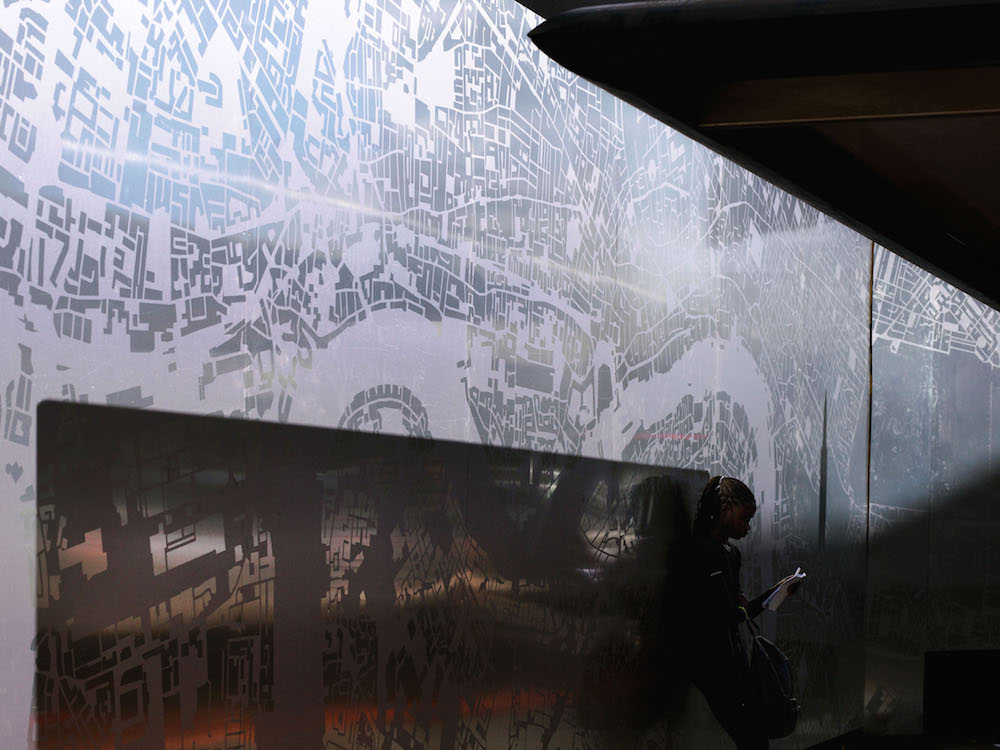
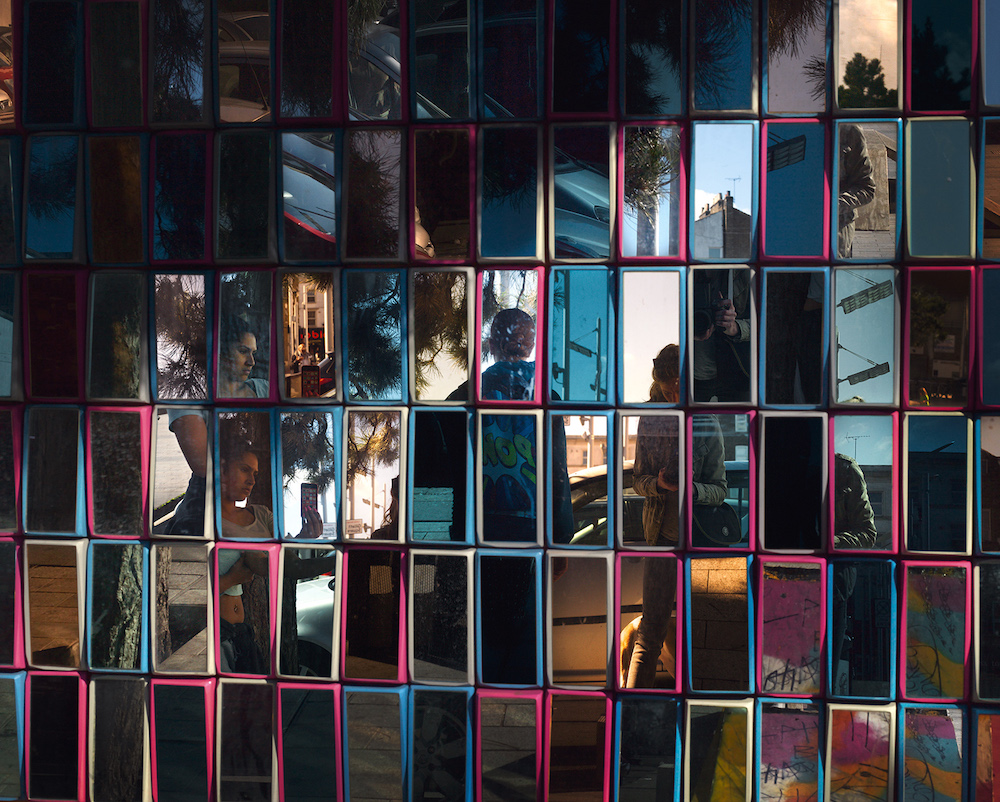
Hannah Starkey Mirror – Untitled, September 2015 framed c-type print mounted on aluminium 122 x 152 cm – 48 1/8 x 59 7/8 in 2015





